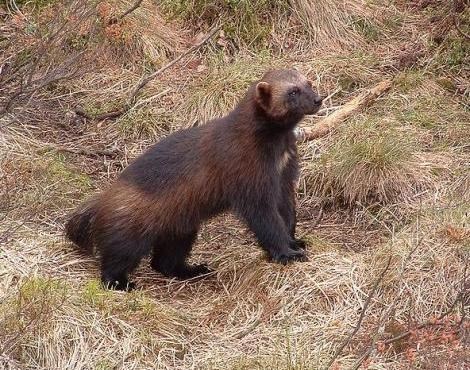THUNDER BAY - After a wolverine was inadvertently caught in a trapper’s snare near Dryden, researchers say it’s not outside the realm of possibility that one would find its way into the area, but the discovery is aiding in the study of the elusive predator.
Matt Scrafford, a wolverine conservation scientist for Wildlife Conservation Society of Canada, said it is never usual to encounter or find a wolverine because they are a very low density and hard to find species. But they do tend to travel during this time of year.
“As you get toward the spring season, they will start to move and disperse out of the areas they were born or out of more saturated habitats into areas where there are fewer animals,” he said. “When they do that they often come into contact with people or traps.”
Earlier this month, trapper Randy Turgeon discovered a wolverine in a snare on his trap line 70 kilometres north of Dryden.
While that was the first time he ever caught a wolverine, other trappers in the area have found wolverines in traps.
According to Scrafford, wolverines were much more prevalent in Ontario before European settlement and populations have been declining rapidly since the 1970s.
“But we believe by some recent work that they’ve started to increase in Northern Ontario and there are more and more of them,” he said.
Scrafford’s study of wolverines began in the spring of 2018 in the Red Lake area. Using bait sites to attract wolverines, remote cameras capture the animals, which have unique chest fur patterns. The team has determined that six wolverines are in the area.
It is estimated that there are between 400 and 600 wolverines in Ontario.
“We are trying to gather information from that population in Red Lake to try and manage wolverines better, what they need, where they spend their time on the landscape, where they are reproducing, so we can manage them better in the face of forestry and human activity,” Scrafford said.
The last major study of wolverines in Northern Ontario was from 2003, which was a collaborative effort between the Wildlife Conservation Society of Canada and the Ministry of Natural Resources and Forestry.
Scrafford said trappers are an asset in the study of wolverines in the area and he was not surprised to hear about the discovery of a wolverine in a trap north of Dryden.
“Dispersal, it happens,” he said. “These wolverines are going into these new areas. They are looking for new places to set up and sometimes they make bad decisions and it happens.”
“That dispersal you are seeing in Dryden, we don’t necessarily see that habitat as being, at this point, a place where you might have reproducing populations of wolverines.”
